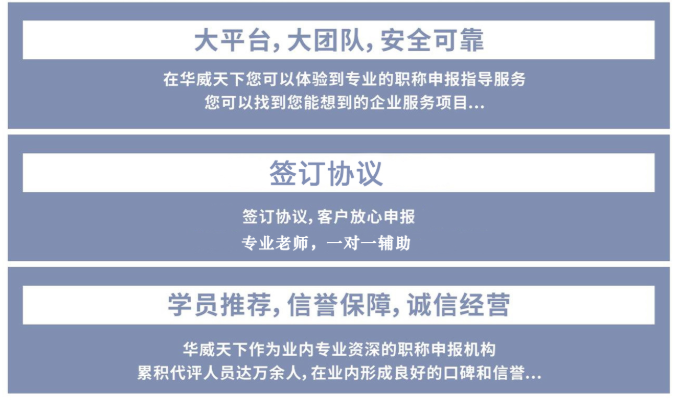Because the official account official has adjusted the push rules, if you want to continue to receive the contents of the official account, please set the public building number of the building as the star sign, and more points of the “look at” and “praise” in the end of the article
.
“If you want to continue to receive the official account, please note that the” WeChat “is a public key
.
Star setting: enter the official account homepage, click the “top” corner, click “set star”, and the official account will appear yellow Pentagram (Android and iOS user operation alike)
.
Source: non structure
.
1、 Anti floating anchor is a kind of anti floating measures for underground structure of construction engineering
.
It is often used in the uplift condition of the foundation with high foundation bearing capacity
.
The natural foundation is used in the calculation of bearing condition, and the anti floating anchor is used in the calculation of anti floating condition
.
The construction process is as follows: anchor production and basic test → anchor positioning and setting out → drilling rig in place → connecting drill pipe → correcting hole position → adjusting angle → opening air source drilling → repeatedly lifting drill pipe → cleaning (air cleaning) → drilling to design depth → anchor installation → pressure grouting → secondary grouting → maintenance → anchor test acceptance
.
Compared with traditional anti floating measures, concrete anti pulling anchor technology has the advantages of high bearing capacity, reliable quality, simple technology, low comprehensive cost and fast construction speed
.
2、 According to the technical standard for anti floating of Building Engineering (jgj476-2019), the calculation method of anchor rod is introduced in detail
.
The part of “rock anchor rod foundation” in code for design of building foundation (GB 50007-2011) and the part of anchor rod in technical code for building slope engineering (GB 50330-2013) can be used for reference, but it is better to be used only for estimation
.
The uplift bearing capacity of anchor rod is very high The eigenvalue should be determined by field test
.
There are some methods of anchor construction for reference
.
3、 Layout 1) centralized point layout, which is generally arranged under the column; advantages: it can make full use of the vertical force from the upper structure to balance part of the water buoyancy; due to the concentrated arrangement of anchor, it has strong resistance
.
Disadvantages: it is required to be anchored in hard rock mass, not suitable for soft rock and soil mass, and the failure is often the failure of anchored rock mass; due to the dense local anchor, the construction of anchor is not convenient; the reinforcement of basement floor beam plate is large
.
2) Concentrated linear layout, generally arranged under the basement floor beam; advantages: due to the relatively concentrated anchor arrangement, it has strong resistance
.
Disadvantages: it can’t make full use of the vertical force from the upper structure to balance part of the water buoyancy (I think it’s unsafe to consider it, for the floor beam with span height ratio less than 6, it can properly consider the vertical force from the upper structure to balance part of the water buoyancy)
.
It is required to be anchored in hard rock, not suitable for soft rock and soil; the reinforcement of the basement floor plate is large
.
3) Advantages: it is suitable for all soil and rock mass; the reinforcement of basement floor is small
.
Disadvantages: it can not make full use of the vertical force from the upper structure to balance part of the water buoyancy (I think it is unsafe to consider it); for the case of insufficient bearing capacity of individual bolts, the resistance is poor because there are few bolts that can be shared; because the arrangement of bolts is relatively scattered, it is troublesome for the external waterproof construction under the basement floor
.
Centralized point layout is recommended for hard rock; centralized linear layout is recommended for hard rock and relatively hard rock; plane uniform layout is recommended for all cases; 4
.
Points for attention: 1) centralized point layout, the combination of anti floating anchor and rock anchor foundation is preferred, and attention should be paid to the influence of bending moment at the bottom of column on anchor tension, especially when the bending moment at the bottom of column is large; 2) refer to the technical specification of building slope engineering The contents of permanent anchor should be selected according to the code of design and construction (GB 50330-2013); 3) the rock conditions (hard rock, hard rock, soft rock, soft rock and extremely soft rock) should be accurately distinguished; 4) the characteristic value of anchor’s uplift bearing capacity should be determined by field test; 5) the determination of anti floating design water level should be reasonable and reliable, which should be provided by geological survey units generally, and the water level should be set if it is relatively reliable and persuasive For observation wells, measures should be taken when the water level exceeds the designed anti floating water level; 6) in the field test of the characteristic value of the uplift bearing capacity of the anchor, the influence of the anchor spacing is not considered, especially when the anchor spacing is relatively dense; when the self weight of the soil within the influence range of the single anchor is greater than the anchor tension, the influence of the anchor spacing can not be considered; 7) due to the influence of the anchor spacing, the influence of the anchor spacing is not considered The rod reinforcement will pass through the outer waterproof of the bottom plate, and the anchor reinforcement shall be provided with waterproof measures; 8) the anchoring length of the anchor solid and (rock) soil layer shall be the effective anchoring length, because the foundation pit excavation will disturb the soil under the bottom plate, especially the foundation pit excavated by blasting, generally 300-500mm shall be added
.
5、 According to the new requirements of the new code, according to the technical standard for anti floating of Building Engineering (jgj476-2019) and the class a foundation specified in the code for design of building foundation (GB 50007-2011), the anti floating design grade is also class A
.
Article 7.5.8 of technical standard for anti floating of Building Engineering (jgj476-2019) stipulates that the anti floating design grade a project shall be designed according to no cracks, and no tensile stress shall be produced in the anchorage slurry under the standard combination of load effect
.
According to the above table, if the anti floating anchor is used for the foundation with grade a anti floating engineering design, the prestressed anchor must be used to ensure that the concrete at the tensile edge of the component does not produce tensile stress
.
This is a new challenge for the common anchor, anchor method and detection
.
The figure below is the design drawing of prestressed anchor
.
6、 Conclusion: the anti floating standard (jgj476-2019) has been implemented for nearly one year since March 1, 2020
.
How about the implementation effect? There are few supporters and many critics
.
The article 7.5.8 is widely criticized, and the foundation design grade is Grade A
.
according to the standard, the prestressed anchor must be used when the anchor is used for anti floating
.
At present, prestressed anchor is used for class a foundation anti floating, and the design unit implements it according to the drawing review opinions and new standards to improve the safety, which is no problem; the drawing review unit implements the stricter new standards and acts according to regulations, which is no problem; but there are few construction units with reliable technology, which leads to higher construction cost and construction risk
.
After comparison, the cost of anti floating anchor is higher than that of uplift pile foundation at present
.
In this case, owners, designers and construction units tend to use uplift pile foundation to solve the problem of foundation floating
.
Only when the construction technology is more advanced and the cost of prestressed anti floating anchor is lower than that of uplift pile foundation, can it be widely popularized
.
Reference: [1] jgj476-2019 technical standard for anti floating of Building Engineering 1) some of the pictures in this paper are from the Internet, and the copyright belongs to the original author and source
.
If it involves infringement or the owner of the original right does not agree
.



